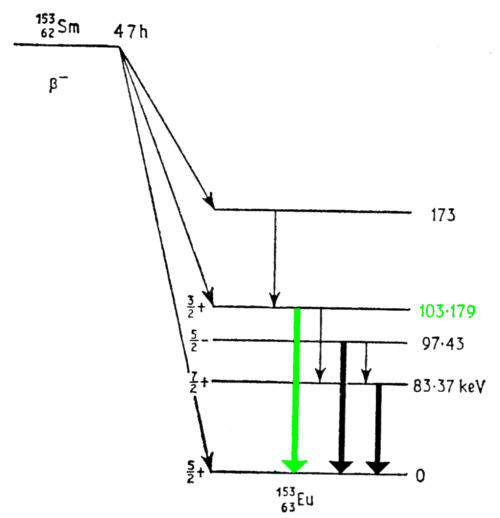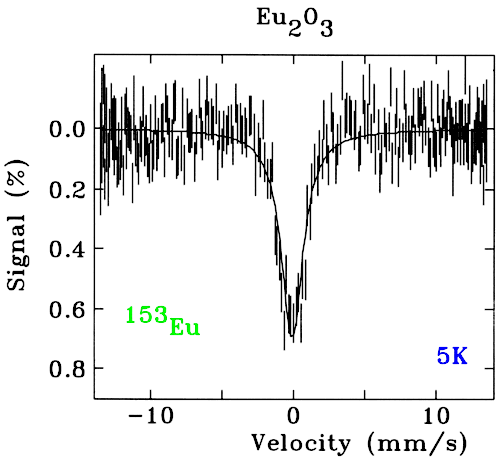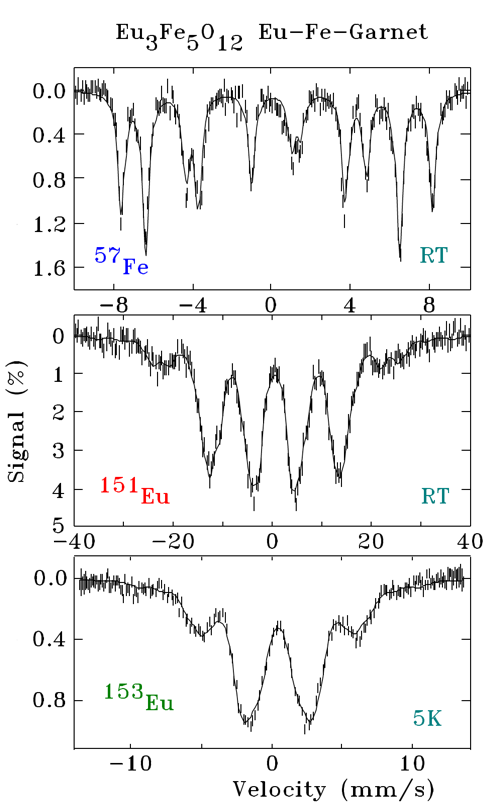 |
153Eu Mössbauer uses the 103.2 keV level which
is populated by the decay of 47 hour 153Sm. This isotope
is prepared by neutron irradiation of 152Sm in the `SlowPoke'
at Ecole Polytechnique, Montreal. Unlike the 21.6 keV level in 151Eu, the 103.2 keV state is populated with over 80% efficiency and the short half-life of the parent 153Sm permits sources with very high gamma intensities to be prepared. |
 |
The spectrum at the left is our first set of test data
for a sample of Europium oxide taken with both the source
and sample held at 5 K a helium flow cryostat. While the natural linewidth of the 103.2 keV 153Eu Mössbauer transition is much narrower than that of the 21.6 keV 151Eu level, the much higher gamma energy leads to smaller observed hyperfine splittings, reducing the effective resolution. |

|
Mössbauer spectra of Eu3Fe5O12
(Europium-Iron Garnet or 'EuIG')
measured using three different Mössbauer resonances. The top spectrum used the 14.4 keV transition in 57Fe and shows two distinct Fe sites with an area ratio of 6:4. The middle spectrum was obtained using the 21.6 keV resonance in 151Eu and shows Eu in two equal-area sites. The bottom panel show the 153Eu Mössbauer spectrum of the same sample with both source and sample held at 5 K. Again, two magnetically split, equal-area Eu sites are observed. The presence of the magnetic hyperfine field splits both the mI=3/2 excited state and the mI=5/2 ground state. There are 12 allowed transitions with substantial ovelap in line positions. The reduced resolution obtained with 153Eu as compared with 151Eu is evident, however the 153Eu spectrum was obtained in about one tenth of the time needed to acquire the 151Eu spectrum. |